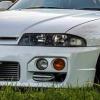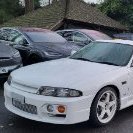To Bleed Or Not To Bleed?
Announcements
-
Similar Content
-
Latest Posts
-
Gabriel, with Malta driving on RHD side, same as us, are Jap imports popular? Do you get any Aussie cars? Have seen a photo of a VN Commodore that found its way there
-
I imagine 20 years ago every post about this car would be "why bother with NA" and "RB25 swap!"
-
Fellow ADHDer to fellow ADHDer; Don't chase that paint perfection. Paint the bumpers, and put them on. Leave the respray for another day. Plus, no one is going to see those old areas above. Any spots of surface rust, give them a clean up, prime, then hit with a white paint just to protect them from rusting. Again, no one can see it. #Mine hasn't been on the road since 2011 cause ADHD... I've slowly learned not to keep f**king with shit if I don't need to...
-
That would be interested if it's the case as seems like it would make the job a lot messier but subaru sells OEM gaskets so seems it might of had it.
-






Recommended Posts
Create an account or sign in to comment
You need to be a member in order to leave a comment
Create an account
Sign up for a new account in our community. It's easy!
Register a new accountSign in
Already have an account? Sign in here.
Sign In Now